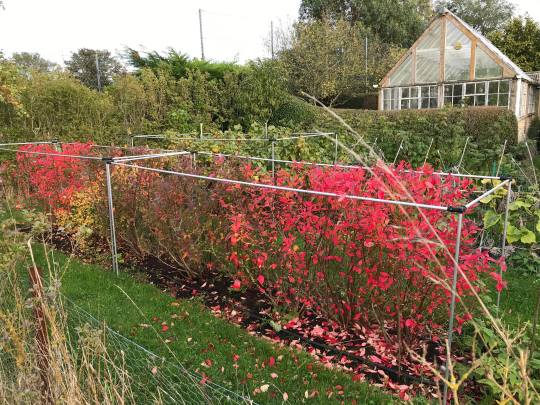#scienceofleafcolor
Text


Red and blue are opposite colours, but they can occur on the same plant in different seasons.
These vivid scarlet leaves belong to the domesticated Blueberry (Vaccinium corymbosum) in October, which had provided us with a massive harvest of blue fruits back in July. The conventional explanation for the change from red to green leaves in autumn is that the photosynthetic pigment chlorophyll is broken down and recycled as the plant prepares to enter winter dormancy, leaving behind the fiery coloured pigments called anthocyanins in the leaves. The latest scientific research suggests the story is more complex. In perennial plants with red fall foliage, research indicates that many new anthocyanins are made in the leaves during autumn and not just un masked when chlorophyll breaks down. The extra anthocyanins may have an antioxidant effect for the plant, allowing the plant to stay healthy and protected from UV damage and cold stress as the plant recycles the nitrogen stored in the leaves.
Plant biologists also hypothesise that changing leaf colour from green to red may deter hungry herbivores from eating the leaves while the plant is trying to recycle and store the nutrients in the leaves to help it survive the winter. Other research suggests that plants adapted to harsher, nutrient poor environments have evolved increased anthocyanin production in the autumn to make the most of the nutrients already in their leaves. Since the domesticated blueberry's ancestors evolved in nutrient-poor bogs of Canada, it makes sense that their pampered descendants in the UK still have red leaves in autumn.
#red#redleaves#autumn#autumnleaves#fall#fallfoliage#crimsonred#leaves#blueberry#blueberrybush#plantscience#plantbiology#botany#scienceofleafcolor#autumncolors#katia plant scientist#katia plantscientist#chlorophyll#anthocyanin#red leaves#fruits and vegetables#plant science#plant biology#plants#plant scientist#garden#grow your own food
8 notes
·
View notes